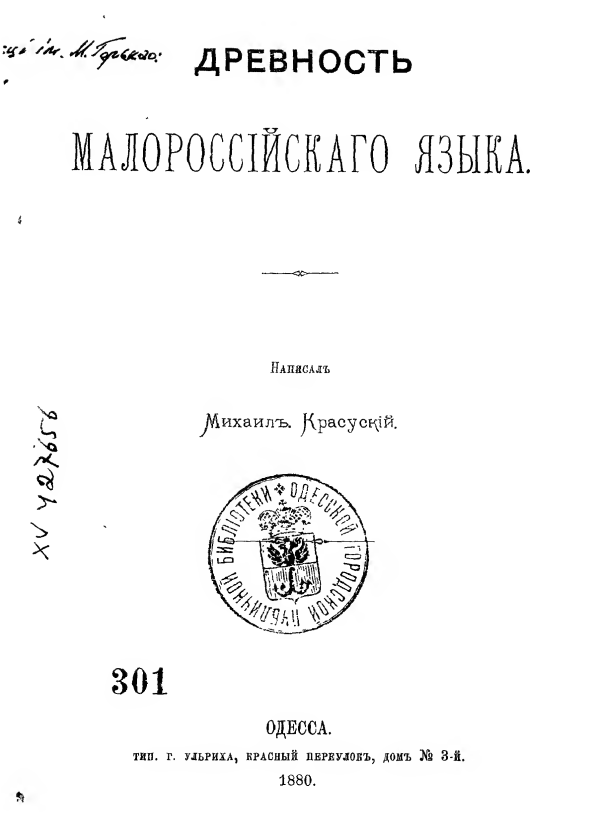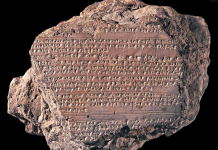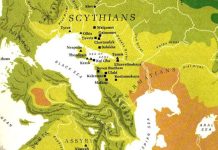The Drevnost’ Malorossiiskogo Yazyka [Antiquity of the Little Russian Language] book was published in 1880 in Odesa. It is available in the original language at Archive.org (In case the link does not work, here is another link. The book is also a part of the russian Presidential library named after B. Eltsyn). Quite telling is the only sentence on the second page – ‘Permitted by censorship’ because it demonstrates the scrutiny of both the author and his work. The book was suppressed by Moscow since then and one can easily understand why – because it debunks Muscovy’s claims of ‘superiority’ of their language. It also shows that ‘Ukrainians’ are natives and dwelt in these lands thousands and thousands of years ago. Here is a translation of just one paragraph of the Introduction:
“On studying and comparing the Aryan languages for a long time, I have arrived at the conclusion that the Malorussian [Ukrainian] language is not just older than all the Slavic languages, not excluding the so-called Old Slavic, but also Sanscrit, Greek, Latin, and other Aryan languages. But, believe it or not, the Malorussian language does not even have a decent dictionary! This circumstance prevented the foreign Philologists from discovering the real source of the ancient languages. Besides, recently, foreign scholars have begun getting convinced that the cradle of the Aryan tribes was not Middle Asia, but the so-called Sarmatian Plain, also known as the Slavic one; consequently, on that plain in the present time live the Malorussians and the colonists to the North that derived from them, the Novgorodians and the Greater Russians on the whole. It is known that the Novgorodian dialect is the closest to the Malorussian language.”
Most famous linguist Vladimir Dal came to a similar conclusion half a century before M. Krasusky >
Why is it important? It proves that the Ukrainian language is not a dialect “corrupted” by the Polish and Austro-Hungarian influences, but is The Language that has given life to other languages and enriched them with multiple new words and meanings.
Ukrainian language may be the closest to the original Proto-Indo-Europen language >
The ‘Cradle of Civilizations‘ book has more facts and insights into the topic.










